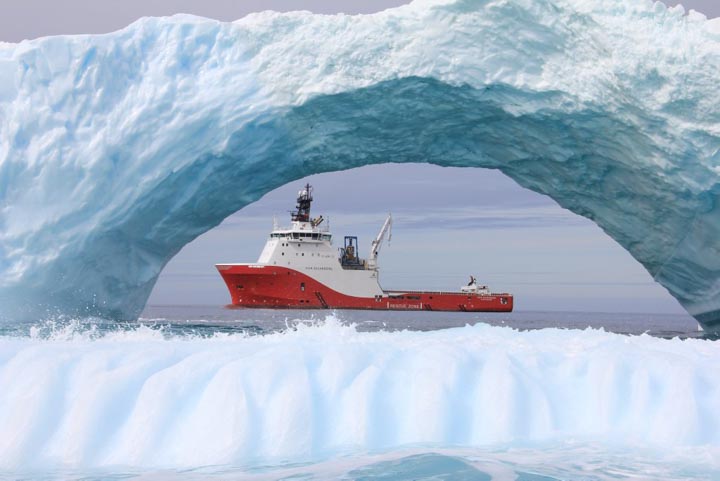The sea areas around the poles are demanding, remote and vulnerable, which is significant for the safety of ships, crew and passengers as well as for the environment in which the ship is operating. For a long time, there have been ongoing international efforts to draw up regulations that take into account the special conditions associated with operation in polar waters. Norway and the Norwegian Maritime Authority has lead the work related to the development of a mandatory international code for operation in polar waters that takes into account the special risk factors that are not sufficiently covered by the other Conventions.
Safety and environmental requirements
The Polar Code has rules on the design and construction of ships, on equipment, operational conditions, training and protection of the environment. The actual Code is divided into two separate parts, one on safety and one on the environment. The safety part introduces, inter alia, a requirement to carry a Polar Ship Certificate for ships that shall be issued with SOLAS certificates and intend to operate in polar waters. A key point in this context is that the safety part is made as an additional requirement for ships that nonetheless are required to have SOLAS certificates, and therefore only applies to SOLAS ships, while the environmental part is based on the MARPOL Convention and therefore has rules that apply to all ships.
The requirements of the safety part are goal-based and functional requirements, and the requirements that apply to the ship are related to the risk factors in the areas in which the ship will be operating, such as ice conditions and temperature. It is important that the company assesses the area of operation for the ship. These conditions, along with any operational limitations, should be set out in the ship's operational manual.
Stricter environmental requirements
The environmental part follows the scope of application of the various MARPOL Annexes and introduces additional requirements to MARPOL Annex I (pollution by oil), Annex II (noxious liquid substances in bulk), Annex IV (pollution by sewage) and Annex V (pollution by garbage). The fact that the environmental part follows the scope of application of MARPOL means that some of the requirements apply to all ships, including fishing vessels.
The environmental requirements of the Polar Code are largely operational and mainly apply to both new and existing ships. Examples of such operational requirements in the Polar Code are stricter rules regarding discharge or oily liquids, noxious liquid substances, sewage and garbage in polar waters. However, there are certain construction requirements related to the prevention of oil spills that will apply to new ships that intend to operate in polar waters where the thickness of the ice may exceed 30 centimetres. This could also apply to new fishing vessels.
Might affect the design of new ships
Although most of the requirements in the environmental part are operational, such requirements may also influence design choices. For instance, certain new ship categories will not be permitted to discharge sewage into polar waters, unless the ship has an approved (wheel-marked) sewage treatment plan. In other words, even if the requirement is operational (prohibition of the discharge of sewage), it might affect the design and arrangements on board, and the company needs to take such matters into consideration for their ship.
The Polar Ship Certificate
The Polar Ship Certificate is a supplement for ships which are issued with SOLAS certificates and intend to operate in polar waters. After 1 January 2017, new ships must have a valid Polar Ship Certificate if the ship is to be operated in polar waters. Existing ships must meet the certificate requirement by the first intermediate or renewal survey, whichever occurs first, after 1 January 2018.
The NMA issues the Polar Ship Certificate for ships registered in the Norwegian Ordinary Ship Register. For ships registered in the Norwegian International Ship Register, the certification process has been delegated to recognised classification societies. The certification process may be initiated based on national rules in the regulations that stipulate this.

